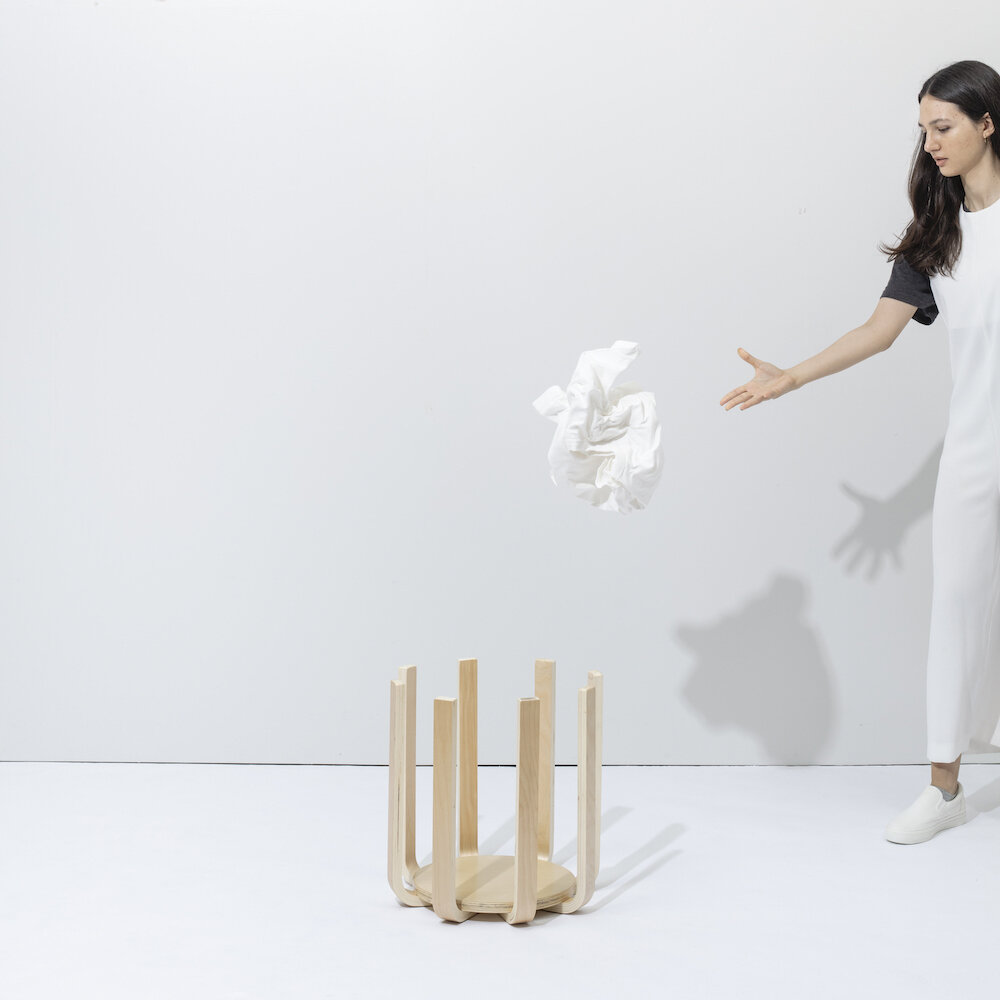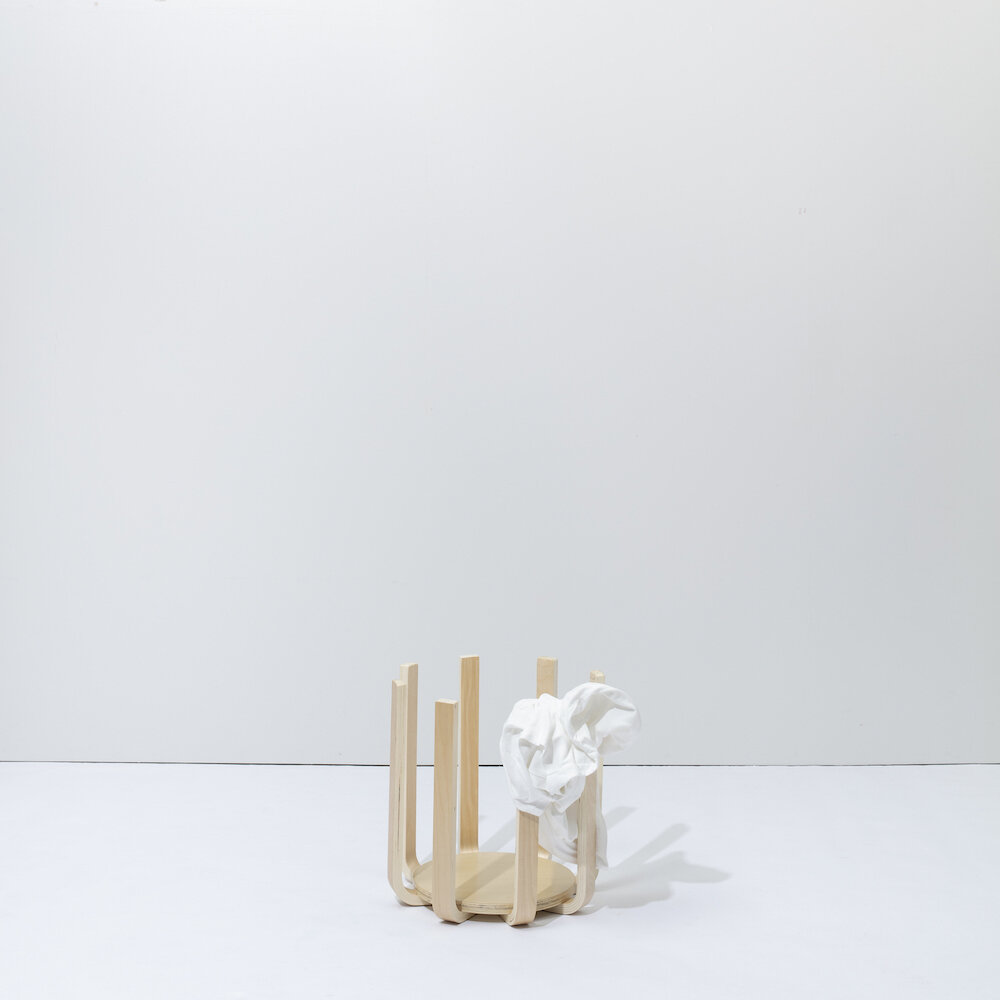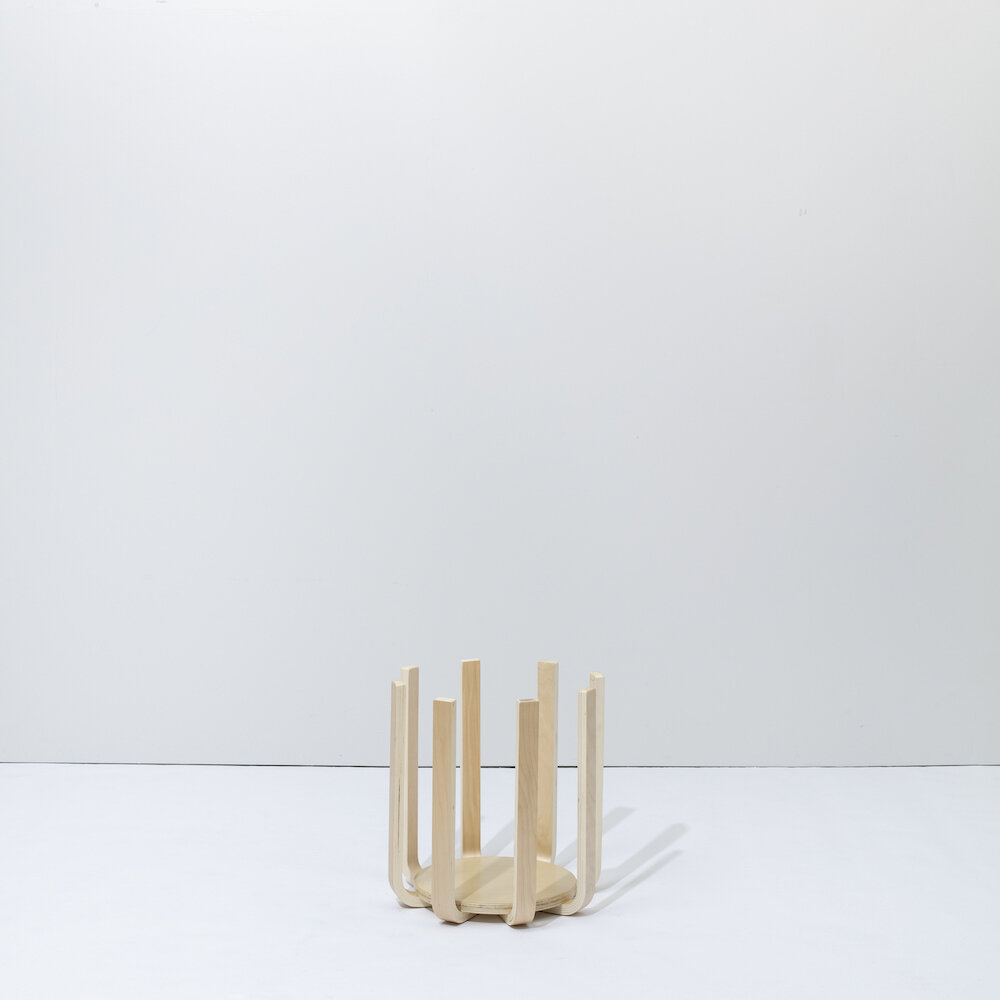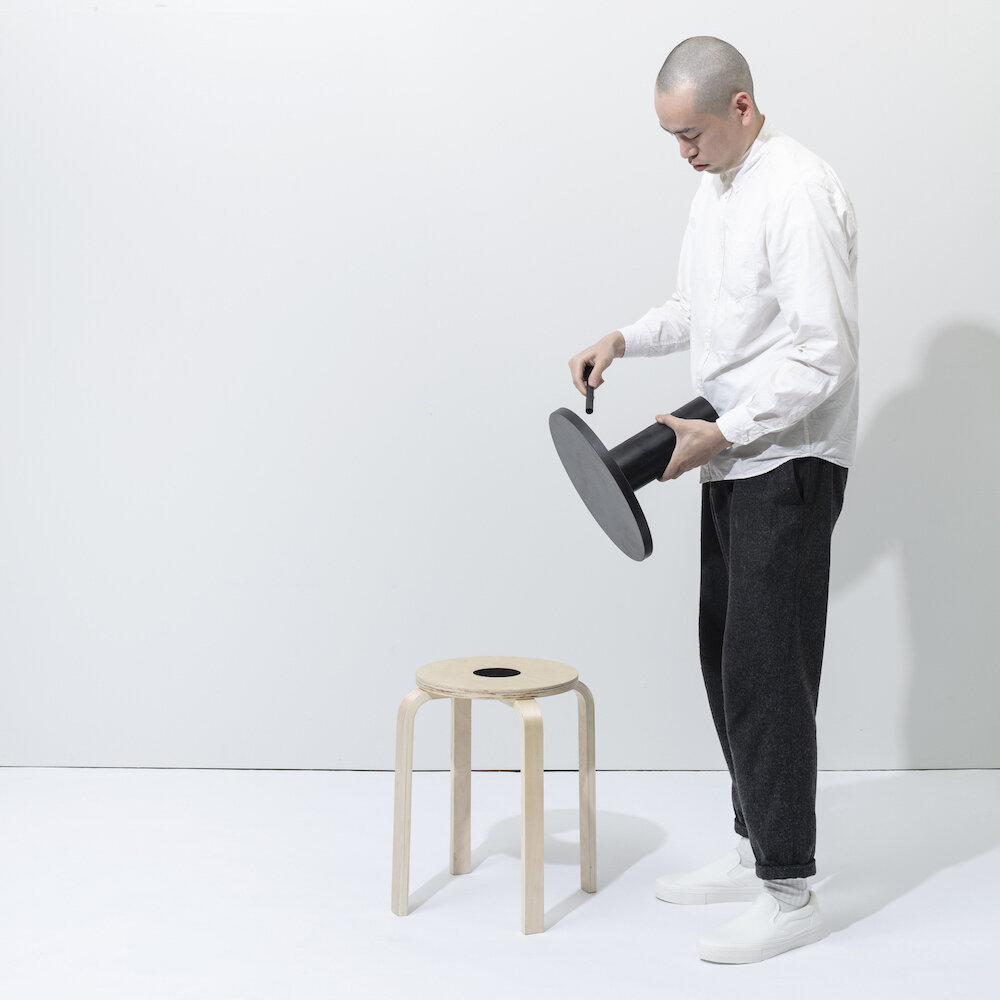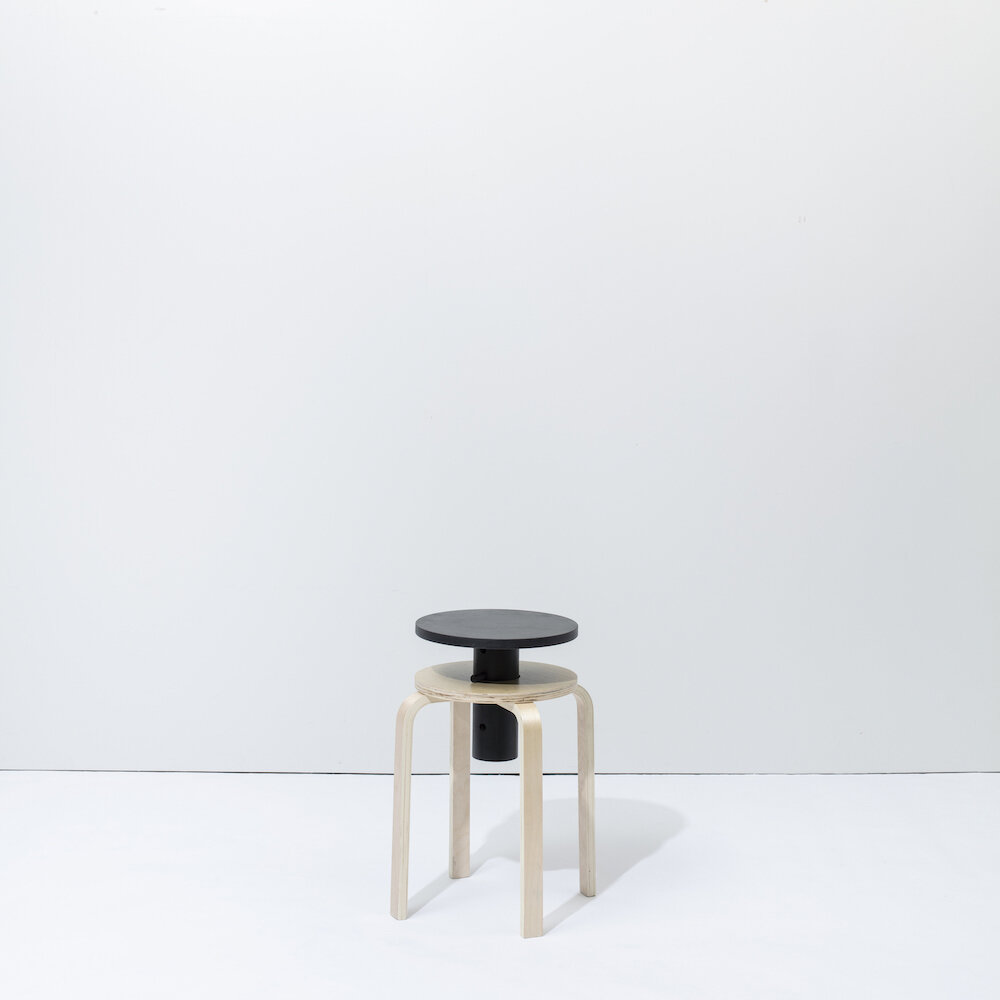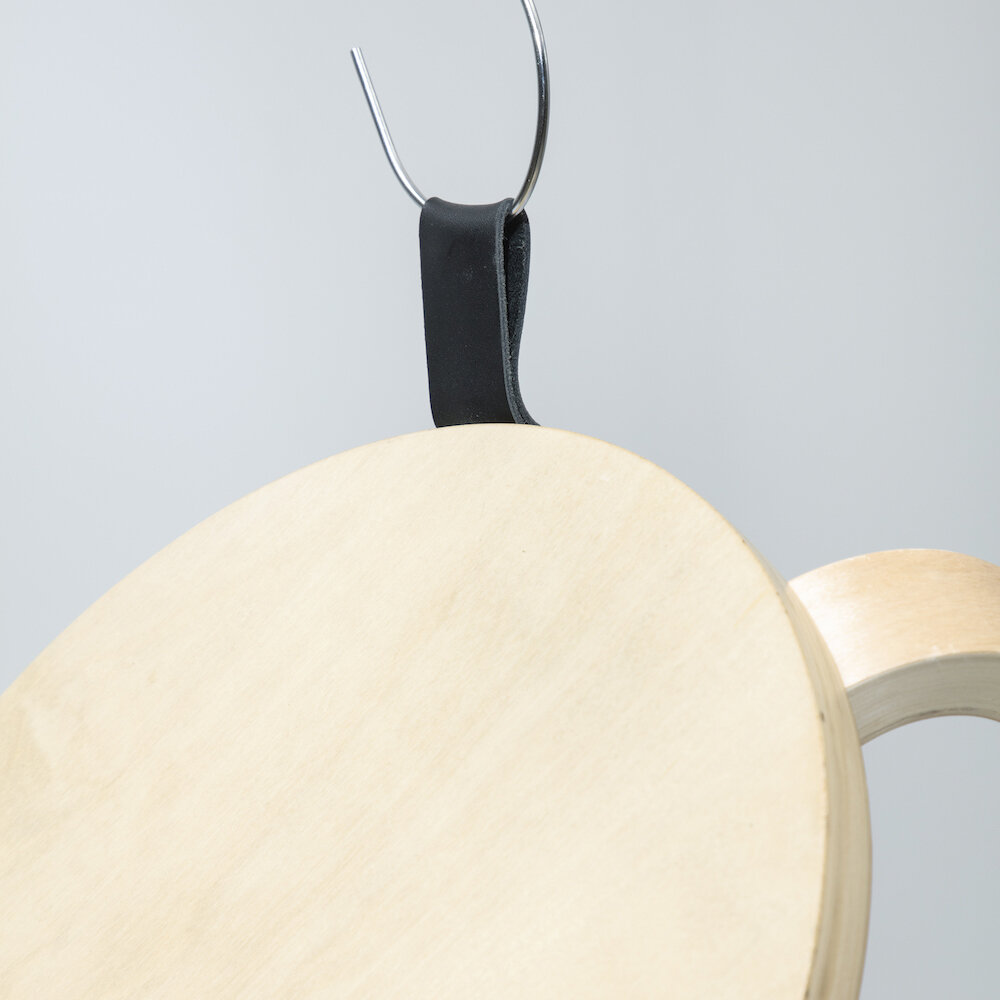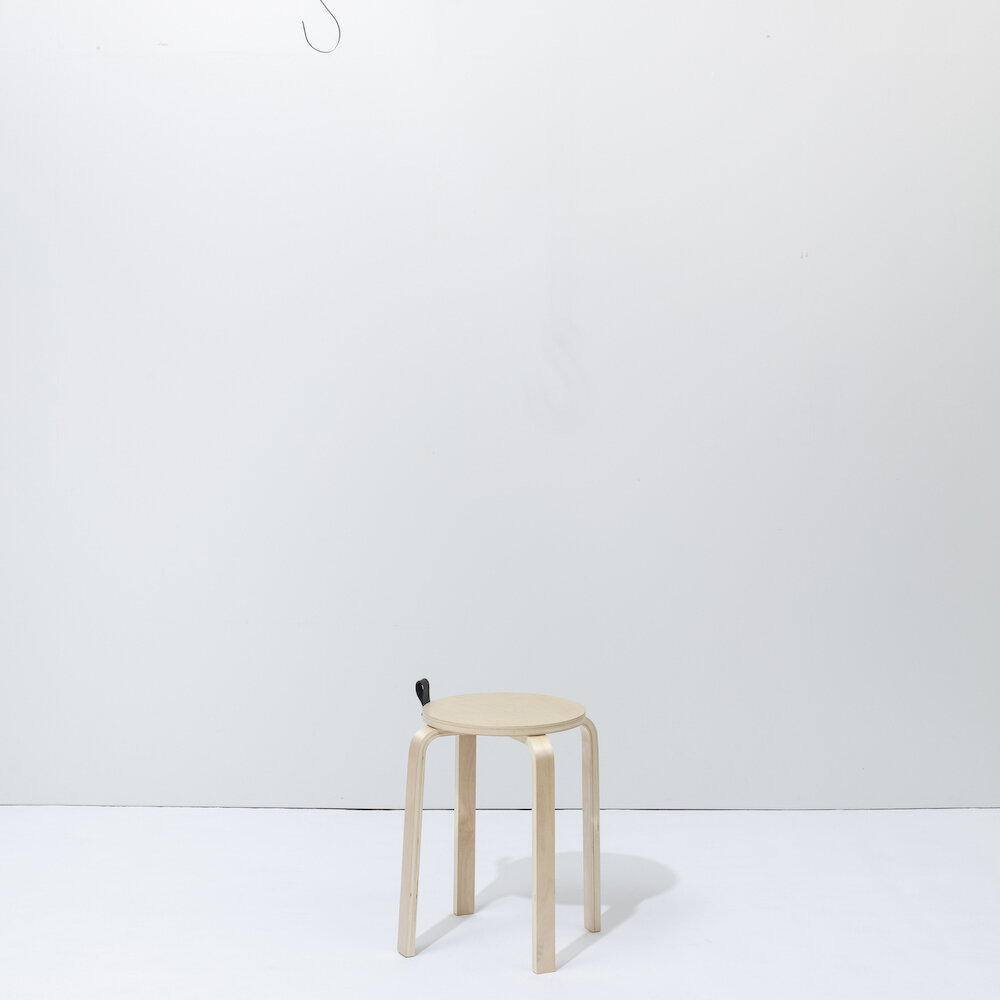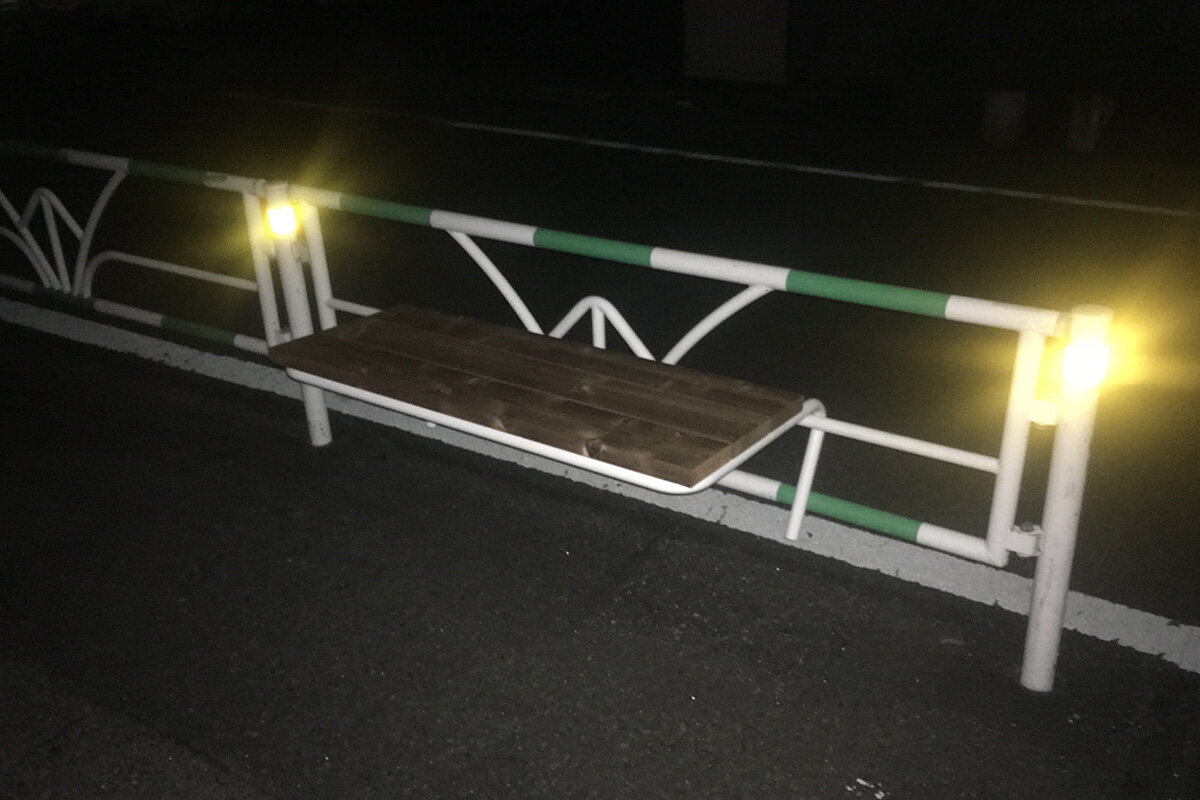Interview with DAISUKE MOTOGI | DDAA/DDAA LAB —part 1
if you regard the item as incomplete, then sometimes unpredicted shapes or usage can arise.
— Daisuke Motogi, DDAA/DDAA LAB
photography : Kenta Hasegawa
words : Reiji Yamakura/IDREIT
Tokyo based architect Daisuke Motogi, a founder of DDAA/DDAA LAB, posts 100 ideas that came from “hacking” Artek's Stool 60 — designed by Alvar Aalto — and its replicas, on Instagram with the title “Hackability of The Stool”, one idea each day.
We asked Mr Motogi about the reasons for choosing the masterpiece that has not lost its lustre even today, and the response he received so far.
graphic design: Takahiro Yasuda
— Could you tell us, what made you think about doing the modification of the stool?
“MISTLETOE OF TOKYO”, the workplace we designed in 2019 for a start-up supporting company, needed chairs for their event at one point. This was a space that we designed while discussing about the necessity for this company to really own a physical office space, and since this is a space that will constantly update itself, there were only minimum required furniture at the time of its opening. Usually they needed to put away their furniture, so we thought stackable stools would be appropriate for them, and so we held a workshop last year to explore their requests.
MISTLETOE OF TOKYO, designed by DDAA in 2019, is an office that is planned to be constantly updated. photography: Kenta Hasegawa
— Oh, you started to think like that to accommodate for a specific space, right?
Yes. When we asked them about the functionalities that they required from the stool, we received lots of requests like they want to be able to put down a coffee cup while sitting on it, or they want a stool with higher height so the audience at the back of the room can watch seminar more easily.
We thought about designing a stool just for this particular space, but then it would be too much, just like multipurpose knives, if we cram in multiple functionalities into one stool. So, the first thing we did was to look for the way to install an attachment to the stool by using a ready-made clamp. For Mistletoe, we’ve managed to create 150 stools in total in the end, with 10 different types that varied from the ones with different heights, to the ones that have a space to place your bag on.
During the process where we were coming up with new ideas, we thought it would be much more interesting if we can share about our project to a wider audience instead of limiting this activity to this particular Mistletoe project, and as a result we decided to regard this as DDAA LAB's autonomous project, and actively continued doing the research.
The idea named ‘LUMP’ has a small extension table like a lump.
‘MINI DESK’ has a small desk with the stool’s leg. It allows you to put your laptop on it.
— Why did you choose Stool 60 as a starting point for your project?
Stool 60 is simple and yet beautiful, it is designed in detail, including its package and distribution. and it is the masterpiece that well represents the modernism. Also, the stool in our actual life is used in many different ways, from bed side table to a shelf to place your bag on.
I think the reason why a stool can be used in so many different ways like that is because it has such a simple shape, with a flat seat and multiple legs that are bent in 90 degrees. We chose Stool 60 because we thought it has a very high potential to be able to transform itself into many different forms.
— You said there were originally 350 ideas, but how did you even come up with that many ideas!?
Usually when we design, no matter what its scale or type may be, we take the method to pick a “keyword” that can be the actual concept of the project, and cross it with “project-specific conditions” to look for the most appropriate solution. What I mean by specific conditions here are the conditions such as location or store type. And then, we bring our own interests, or perspectives and cross all of them with each other, one by one from A to Z to seek for the best idea.
This way of thinking was influenced by the essay of renowned architect Jun Aoki. It’s a good way to look for the solution because as you start applying many ideas, you will be able to well understand the pros & cons of each idea, and it’s important to try out the idea just for once, even when that idea doesn’t look appealing to you at the start.
The upside-down idea ‘LAUNDRY BASKET’ is a fun idea. They add four legs and replace the seating on the bottom.
‘HEIGHT ADJUSTMENT 2’ is an idea of elevating the seating surface with centre shaft.
‘LEATHER TAB’. They have modified the stool with tabs attached to the seat edge so that it can be hung.
— Your method to organise many ideas into detailed categories is quite unique. How did you organise your ideas for this particular stool project?
We don't always do categorization, but here we've broken it down into several categories such as Subject, Geometry, Function, Material and more to do the high level classification of the ideas. For example, for the category Subject, we listed carpenter, plants, cats, and other words that can become the subjects.
An idea for plants named ‘PLANT POT’ and the hand drawing.
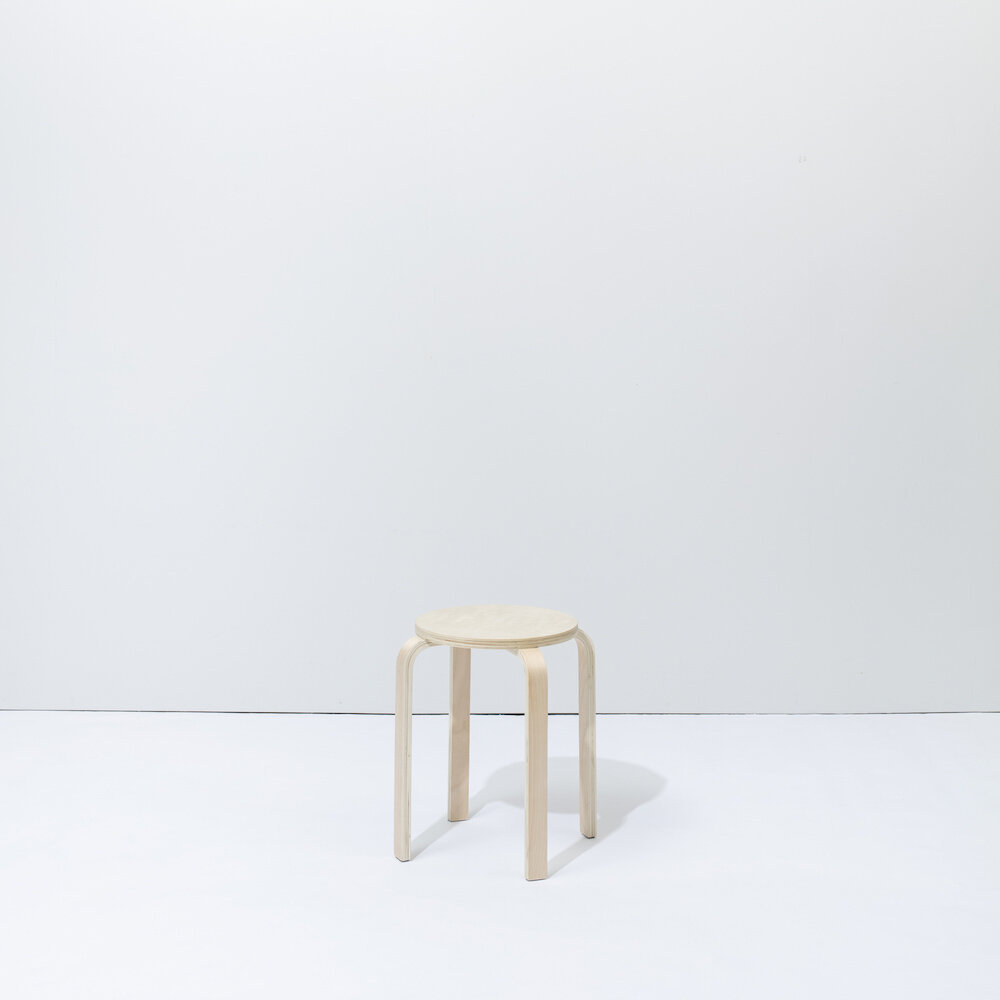
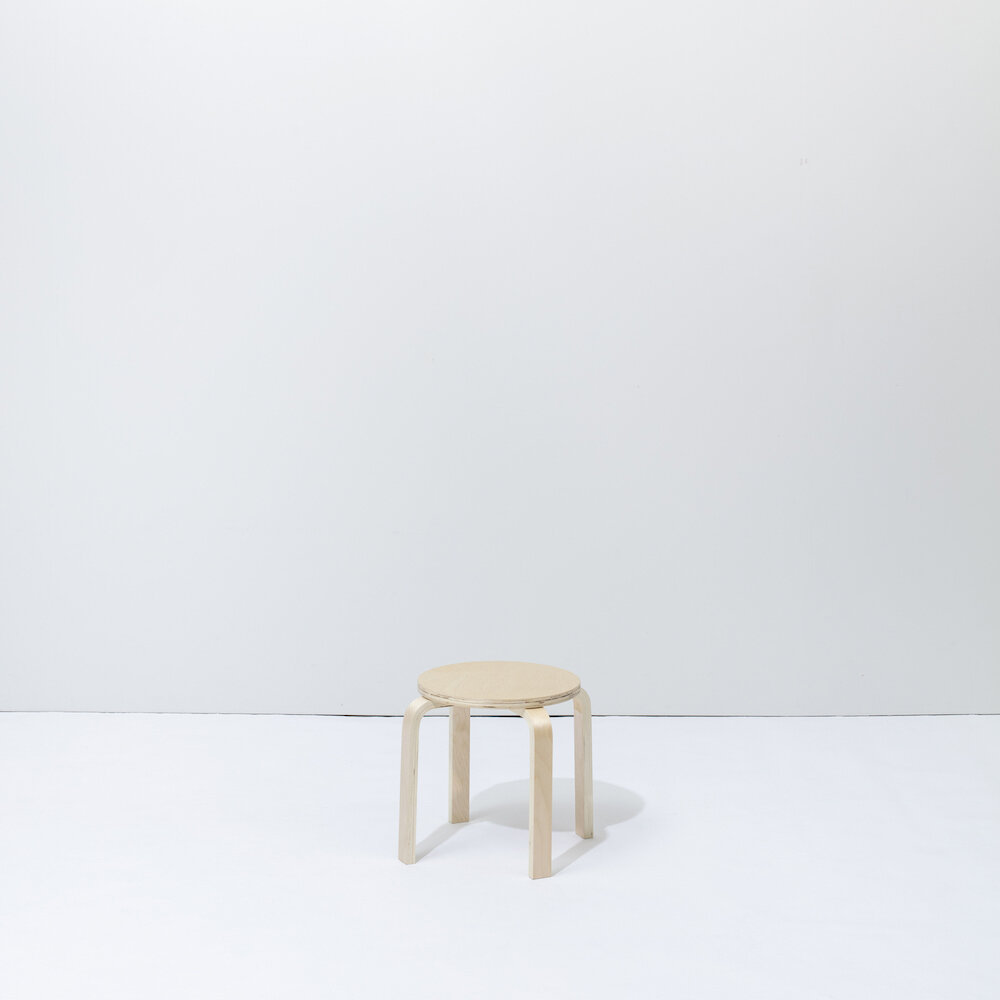
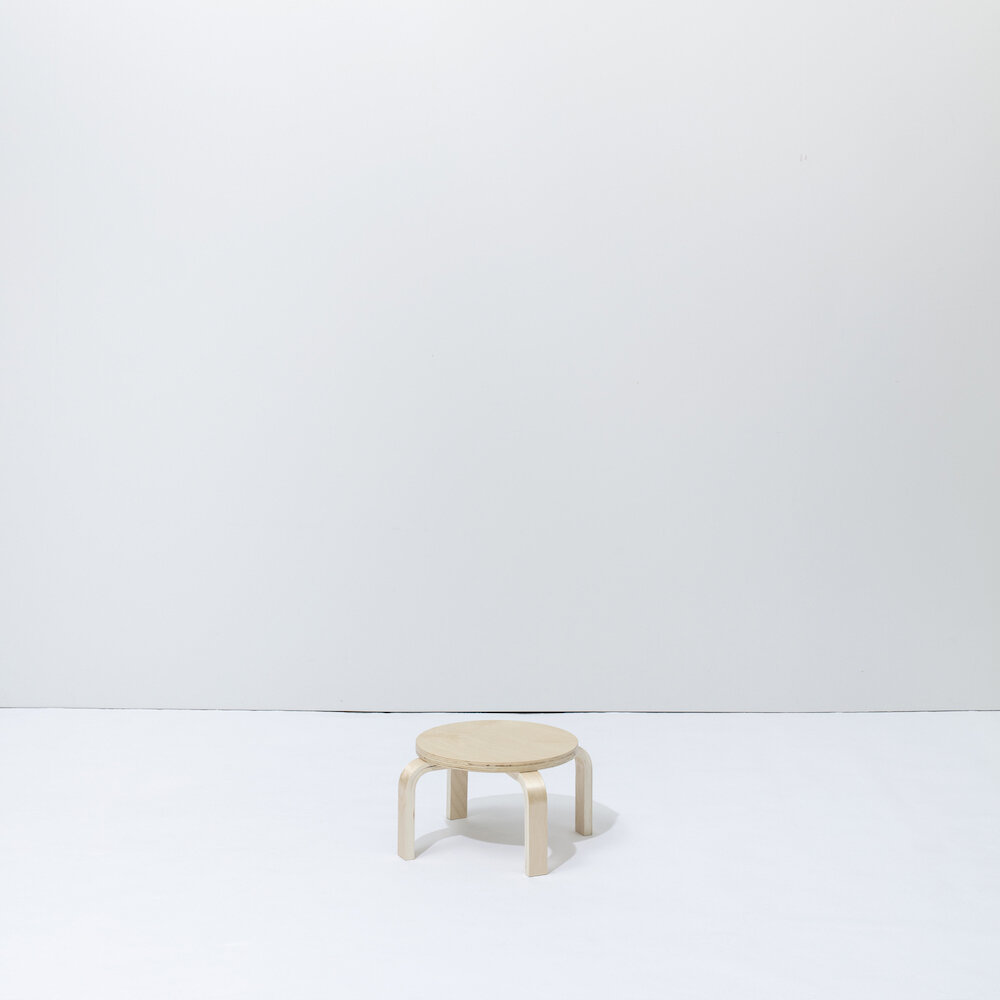
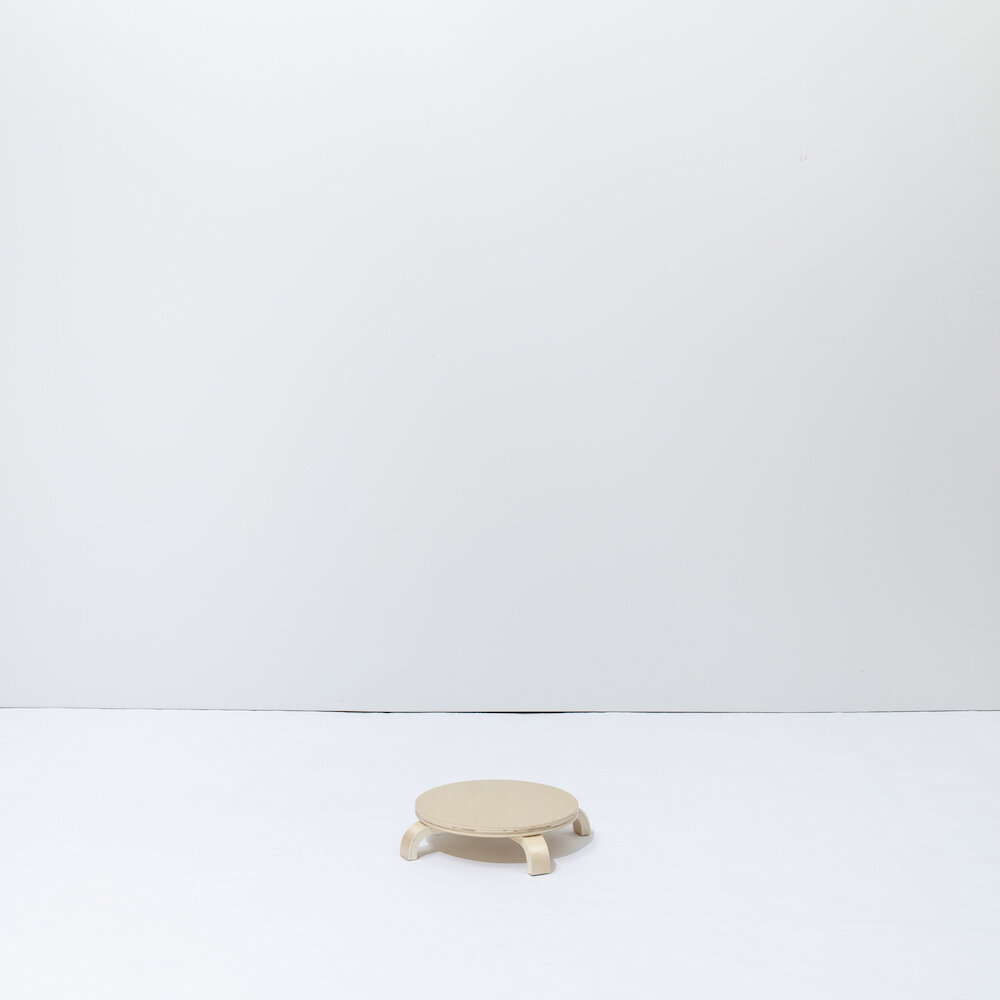
By cutting legs, they made four variations in the idea ‘HEIGHT ADJUSTMENT’. Just thinking about how to use it makes the user fun.
Besides, for the category Geometry, we further divided the ideas into 2 different groups called Plus and Minus, where Plus will have ideas that involve addition of an element to the stool, like a stage to place a bag, and Minus will have ideas that involve subtraction of an element to the stool like cutting its legs shorter. Subdivision of ideas is a useful method when we want to increase the number of overall ideas because it will allow insufficient parts to be visualised.
— Were there ideas that were rejected during that process?
Yes. One time we created a category called Culture in an attempt to think about “Stool for Japanese” or something. But then this project is all about trying to come up with the idea to accommodate niche needs by applying some things or small functionalities to the mass-produced product that was born as a result of modernism. So, if we set a large scope, then there will be some discrepancies with our objectives, so we rejected that idea during the thinking process.
— Coming up with that many ideas and trying different ways can probably have a great effect on training your creativity.
I think, when we practice this kind of idea generation, we will eventually acquire explosive power to handle projects with very short deadline. Occasionally I receive job offers that I want to accept, but they have very short delivery time. If we can instantly provide intriguing proposals to our clients, then they can also get into that same rhythm with us, and that can possibly lead us to successfully realise a unique idea that we don’t usually come up with.
— I see. Why did you implement “Hackability of The Stool” as LAB’s spontaneous activity?
I believe it's vital for my design studio to continually produce the experimental output, so last year we established DDAA LAB as an organisation to carry out researches and experimental design. I want to spend more time on designing rather than on sales activities, and to do so we wanted to showcase our uniqueness in our portfolio and get future jobs with our performance.For the future, I would like to allocate 1/3 or 1/2 of overall resources to the experimental projects.
A project called ‘Bench Bomb’ is an experimental design to hack the guardrails in the city. DDAA designed a bench seat that could be attached to the guardrails.
— That sounds interesting! Mr Motogi, you have been doing the designs that involve “hacking” of something that already exists, but when you look at its root, do you think there is a consciousness to try to refine existing items into better forms?
For product designing for example, I have many designers I admire, and I am the kind of person who can get honestly impressed by the product designed by another person who can potentially be my competitor. Creating a new design is just like joining a game of musical chairs with other designers. So, unless we think from a different perspective, we can't make something better than what's out there.
Also, I am currently very interested in the designs that do not end there when they are completed, but rather they keep updating themselves after the completion. The moment the design completes is not the ultimate moment, I think. Just like vintage sneakers or artworks, there should be “a way” for an item to exist without losing its value over a long period of time.
If you regard the current state as the completed form, then your thought will stop right there, but if you regard the item as incomplete, then sometimes ideas of unpredicted shapes or usage methods can arise.
I think it’s necessary to look at things with the assumption they will freely change over time, or to consider improving the world further by thinking from unbiased perspective. I used the term “Hackability” as the title because I thought it’s important to give attention to things that may possibly change or improve further from the current status.
The idea ‘BENCH’ is to use it as a bench by connecting the two stools with long board.
— You were planning to hold exhibitions in Tokyo, weren’t you?
We were planning to hold an exhibition in April this year in Tokyo to present our 100 ideas. We were also planning to exhibit our stools at the Venice Design Biennial, as we were scheduled to participate in The Japan Pavilion at the 17th International Architecture Exhibition, Venice Biennale 2020 that was scheduled to start in May.
But due to the Covid-19 pandemic, everything was postponed to next year, so I’ve decided to post one item per day on SNS.
— I see. Currently you have posted about 50 ideas so far, but what was the reaction like?
Right after we started this, we got a contact from people from Artek saying they enjoy the posts. Also, someone I know tells me about a stool customised by a craftperson that once existed inside Artek factory, or requests me to think about publishing these archives as a book.
It’s a pity we cannot display the actual stools, but I very much enjoy sharing the ideas on Instagram right now.
Without flinching from modernist masterpieces of stools, DDAA LAB's "assenblage of ideas and researches on how to create various useful products based on mass-produced product in much easier ways" will be updated today. Their ideas, rooted in respect for Aalto and Stool 60, present new perspectives and humour in today's society where mass production has become the norm.
It would be wonderful to talk to him again and ask about the overall experience at the time when he finishes releasing all 100 ideas.
DAISUKE MOTOGI
Born in 1981. After graduating from Musashino Art University in 2004, he joined to Schemata Architects. Founded DDAA, a design firm that works with multi-disciplinary projects based on architectural thinking. Established DDAA LAB for experimental design and research in 2019. He will participate in the Japan Pavilion at the 17th International Architecture Exhibition -Venice Biennale- in 2021.
CREDIT + INFO
Name: Hackability of The Stool
Design: DDAA/DDAA LAB Daisuke Motogi, Kazuya Sumida
Detail Design & Production: Takahiro Kai
Model: DDAA/DDAA LAB Kazuya Sumida, Giulia Chiatante
Graphic Design (poster): Takahiro Yasuda
Period: 23 June, 2020 —
Instagram: www.instagram.com/daisukemotogi






